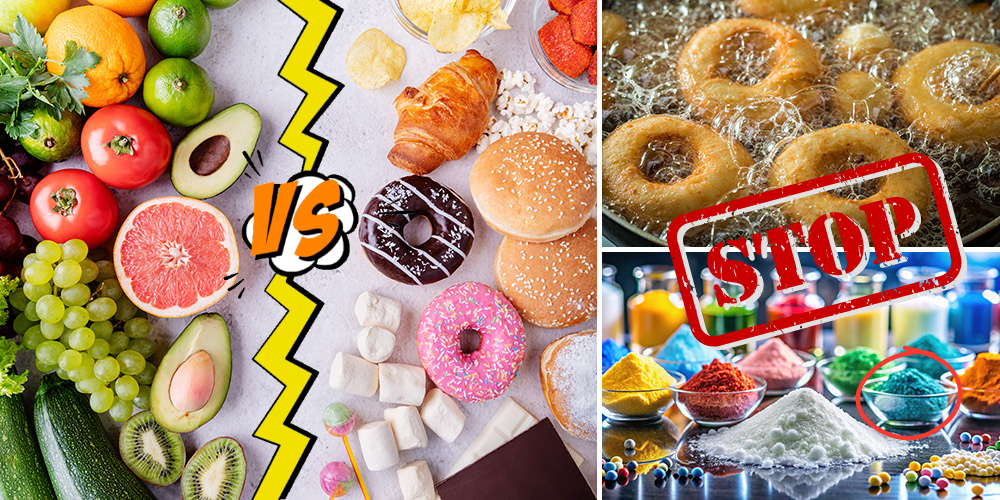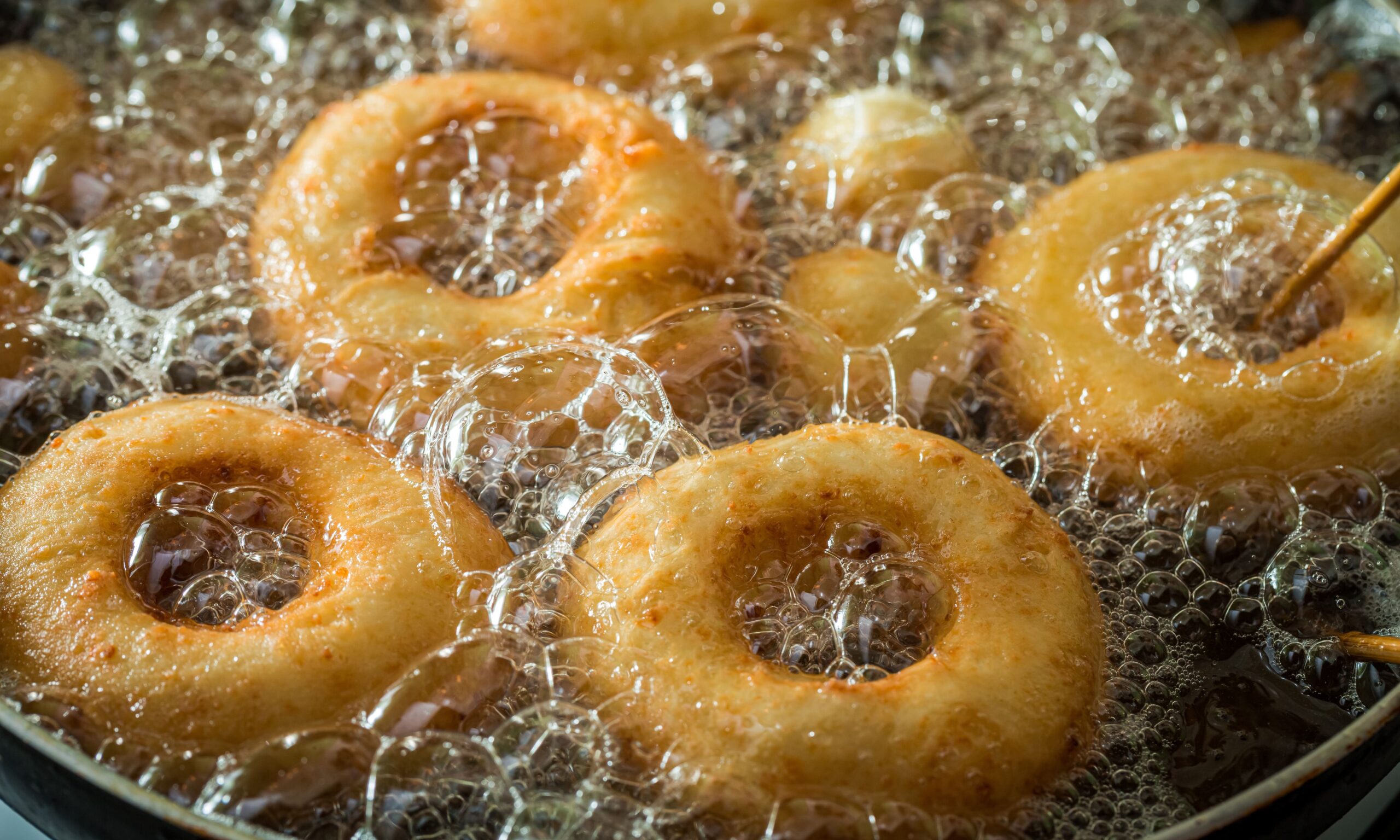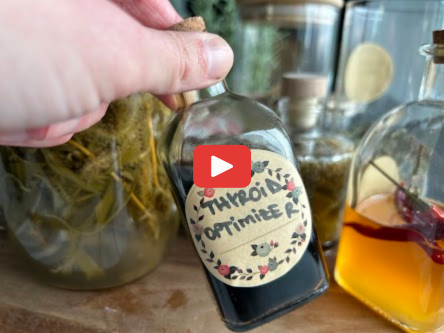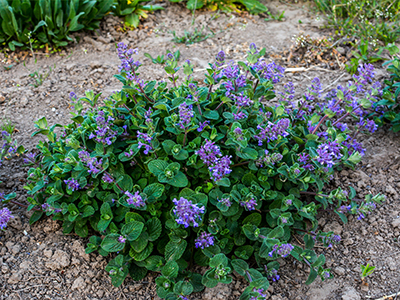
7 Dangerous Foods That Fuel Your Inflammation
You might think you’re eating pretty healthy. Maybe even “clean.” But what if I told you that some of the most common foods in your kitchen right now are silently triggering chronic inflammation — the kind that slowly chews away at your joints, clogs your arteries, and leaves your body in a constant state of pain and exhaustion? That’s exactly what 7 Dangerous Foods That Fuel Your Inflammation exposes—and chances are, you’ve eaten at least one of them today.
The Silent Damage of Chronic Inflammation
I was stunned to learn that this slow burn is behind joint pain, autoimmune diseases, heart disease, and digestive disorders. It’s essentially your immune system stuck in attack mode, quietly deteriorating tissues and organs over time.
In fact, chronic inflammatory diseases are a leading cause of death worldwide – three out of five people will die due to illnesses linked with ongoing inflammation (like heart disease, stroke, diabetes, or cancer).
Think about that: the odds are more than fifty-fifty that unchecked inflammation could cut our lives short. That realization hit me like a ton of bricks.
It’s a scary thought, isn’t it? What kind of damage is happening inside your body — in your arteries, your gut, your joints — without you even knowing it?
Chronic inflammation is sneaky; by the time you feel the damage, it may be irreversible.
Many so-called “healthy” foods in your pantry are secretly fueling your inflammation. Here are the 7 everyday foods I discovered were most dangerous – and you probably have them in your home too.
1. Seed Oils: The Omega-6 Trap
I always thought vegetable oils like corn, soybean, or sunflower oil were healthy because they’re plant-based. I’d drizzle them on salads and use them for frying, unaware that I was pouring inflammation into my body. These oils are high in omega-6 fatty acids (linoleic acid), and consuming too many omega-6s without enough omega-3s throws your system off balance.
Research shows that diets heavy in omega-6 seed oils trigger low-grade inflammation and oxidative stress in the body. Basically, the excess omega-6 can spur your cells to produce inflammatory chemicals.
I was shocked to learn that these oils can even hurt your heart. They promote the formation of pro-inflammatory compounds that damage blood vessel linings and contribute to atherosclerosis.
That bottle of “heart-healthy” corn oil in my cupboard was quietly setting me up for clogged arteries! Now, I check labels like a hawk. Seed oils hide in so many packaged foods – chips, salad dressings, margarine, mayonnaise, you name it.
If the ingredients list “soybean oil,” “corn oil,” or “vegetable oil,” that food is likely dousing your insides with inflammation. I started swapping these out for healthier fats (like olive oil and avocado oil), and my body has been thanking me ever since.
Anyway, there is one oil that you should totally remove from your diet today! Each day of consuming it shortens your lifespan. Click here to see what I’m talking about.
2. Refined Sugars: Sweetness with a Price
Sugar was my stress reliever – a donut here, a soda there. I never connected my sweet tooth to my swollen, aching knees or why I’d get sick so often. Refined sugar is one of the most inflammatory substances you can eat.
Over time, excessive sugar keeps your inflammation pathways activated. In fact, research has found that a high-sugar diet is closely linked to chronic inflammation and even autoimmune diseases. Conditions like rheumatoid arthritis (joint inflammation), multiple sclerosis, and even inflammatory bowel disease have been associated with too much added sugar. That sweet fix is literally making your immune system attack your tissues!
What’s worse, sugar’s damage is far-reaching. It raises blood pressure and puts extra strain on your heart, creating a perfect storm for cardiovascular disease.
An innocent-looking can of soda is like gasoline on the inflammatory fire, potentially setting you up for heart trouble down the road. I began to cut back on refined sugars and looked for their sneaky aliases on ingredient lists – high-fructose corn syrup, dextrose, maltose – all code for sugar.
High blood pressure, often called “The Silent Killer,” lurks unnoticed, quietly raising your risk of heart disease and stroke. A stroke can change your life forever, potentially leaving you paralyzed. But there’s something you can do to take control now.
 I recently came across a step-by-step video guide on how to make a Medicinal Juice for Blood Pressure. This simple yet powerful remedy, shared in the Lost Remedies Academy, is designed to support healthy blood pressure naturally.
I recently came across a step-by-step video guide on how to make a Medicinal Juice for Blood Pressure. This simple yet powerful remedy, shared in the Lost Remedies Academy, is designed to support healthy blood pressure naturally.
Click the video to see exactly how to make this life-saving juice at home. It’s an easy, actionable step you can take today to care for your heart and reduce your risk of future complications.
The difference was night and day: my energy improved and my joint pain eased up. It’s frightening how silently sugar was eroding my health, and I’m relieved I caught on when I did.
If making your own remedy feels like too much of a commitment—let’s face it, not all of us have the time to wait weeks for an elixir to infuse or the energy to get ingredients for homemade juices—there’s an easier way to give your heart the care it deserves.
A ready-made Hawthorn Heart Elixir combines all the benefits of this age-old remedy without the effort of gathering ingredients or waiting for results. Each drop is packed with heart-strengthening compounds, carefully crafted to support blood flow, reduce strain, and help your heart beat at its best.
It’s like having the power of hawthorn berries bottled up, ready to use when your heart needs a little extra love. I found an incredible source for this tincture here—you can explore it for yourself.
3. Processed Meats: Preserved Pain
Growing up, I loved bacon at breakfast and deli turkey on my sandwiches. I thought lean deli meat was a decent choice – high in protein, right?
But processed meats (like bacon, hot dogs, pepperoni, ham, and cold cuts) became a daily dose of inflammation for me. These meats are packed with preservatives (like nitrates) and advanced glycation end products (from smoking or grilling processes) that ignite inflammatory reactions in the body.
Think about what that means: that daily ham and cheese sandwich might be causing invisible inflammation in your blood vessels and joints. Over the years, that could manifest as heart disease or worsen arthritis. I also learned processed meats can disturb the gut.
Now, I treat processed meats as an occasional treat (if at all). I opt for fresh, unprocessed meats and watch out for hidden sources – even seemingly healthy “protein” snacks (jerky, sausage sticks) are often loaded with inflammatory preservatives.
I also take at least 10-12 drops of this Elderberry tincture every day – it helps me counteract the harmful effects of all the inflammation buildup.
It actively reduces oxidative stress, which is the underlying cause of chronic inflammation and its compounds kill the free radicals that cause heart disease, arthritis and cognitive decline. It’s not easy, but cutting back on these meats is like removing sand from the gears of your body’s engine – things start running smoother.
4. Artificial Additives: Unseen Invaders in Your Gut
If you’re like me, you probably grab convenient packaged foods to save time – a protein bar, a flavored yogurt, maybe a frozen dinner. I never imagined that the long list of unpronounceable ingredients on those labels was quietly wreaking havoc inside me.
Artificial additives such as preservatives, flavor enhancers, food coloring, and emulsifiers can act like unseen invaders, irritating our gut and confusing our immune system. For instance, common emulsifiers (added to improve texture in ice cream, dressings, etc.) can disrupt the gut’s bacterial balance and trigger inflammation.
 I realized that my daily “healthy” low-fat yogurt (with its artificial sweeteners and thickeners) might have been inflaming my intestines every day. No wonder I was bloated and uncomfortable!
I realized that my daily “healthy” low-fat yogurt (with its artificial sweeteners and thickeners) might have been inflaming my intestines every day. No wonder I was bloated and uncomfortable!
Artificial sweeteners are no saints either – some research suggests they can worsen inflammation in the gastrointestinal tract and even contribute to conditions like Crohn’s disease in those predisposed. It’s frightening how these additives hide in friendly-looking foods on supermarket shelves.
Now, I’m extra cautious: I scan labels for things like monosodium glutamate (MSG), carrageenan, sodium benzoate, aspartame – and if I see a laundry list of chemicals, I put it back on the shelf.
I also started using a detoxifying tincture to speed up the process – this one is so powerful it can clean up your blood, liver and gut at the same time.
This was a tough change (goodbye, favorite flavored chips!), but taking Plantain together with Slippery Elm and Marshmallow not only curbs these cravings, it supports my gut and fills me with energy in a way that I don’t even feel like reaching out for those things in the first place. You can actually get all of these herbs extracted into one powerful formula — no need to juggle three different bottles.
5. Refined Carbs: White Flour, White Flag for Inflammation
Maybe you start your day with a bowl of sugary cereal or a couple of slices of white toast. It’s quick, it’s tasty, and it feels like comfort food, right? Well… these refined carbohydrates (white flour bread, pastries, traditional pasta, etc.) were basically sugar in disguise – and sugar, as we know, fans the flames of inflammation.
Refined carbs have been stripped of fiber and nutrients, causing them to digest at lightning speed. The result? Blood sugar spikes and crashes, over and over, which put our body in a pro-inflammatory state.
Research indicates that a diet high in refined carbs contributes to chronic low-grade inflammation. The constant surge of glucose and insulin triggers the release of inflammatory messengers and oxidative stress.
That morning bagel? It was likely setting me up for an afternoon of joint stiffness, energy crashes, and brain fog. And worse? Diets loaded with high-glycemic grains are linked to heart disease, type 2 diabetes, and arthritis — three things that run in my family. The warning signs were right there. I just didn’t see them.
What helped me turn things around was learning exactly what to eat instead, and when. Inside The Holistic Guide to Wellness, there’s an entire section that covers anti-inflammatory breakfasts, plus complete recovery protocols for type 2 diabetes, joint pain, heart disease, and even autoimmune flare-ups like MS or RA. It’s not just about what foods to avoid — it shows you exactly what to do each day, from morning to night, to help your body heal.
I began to follow those steps and swap out refined grains for truly whole grains, and then cut down portion sizes. Almost immediately, I noticed fewer energy crashes and less of the mysterious aches I’d feel in my fingers. It felt like defusing a ticking time bomb – each meal without refined carbs was one step away from the inflammation trap I’d been caught in.
6. Trans Fats: The Artificial Fat that Attacks
If you also grew up spreading margarine on toast, believing it was better than butter… I’m sorry to break it to you.
But I was actually slathering my bread with an inflammatory nightmare. Trans fats are man-made fats that our body cannot process properly, leading to rampant inflammation and damage to blood vessels.
Even a small amount of trans fat is enough to stiffen arteries and ignite inflammation.
The science on this is chilling: One study found that people who ate the most trans fats had 73% higher levels of C-reactive protein (CRP) – a key marker of inflammation – compared to those who ate the least. In the same study, other inflammatory cytokines like IL-6 were significantly elevated as well in the high trans fat group.
We now know trans fats are so dangerous that many countries have banned them But be careful: some products still contain them under the radar, often labelled as “partially hydrogenated oils.”
Here’s what shocked me: trans fats don’t just hurt your heart — they also fuel the growth of visceral fat (the dangerous kind that builds around your organs) and can slow down your metabolism. I highly recommend reading the article on The Lost Herbs about how to get rid of visceral fat if you haven’t already. It explains how inflammation and hormonal imbalance go hand-in-hand, especially when it comes to fat storage and energy.
It taught me that if your thyroid is sluggish, no amount of dieting or exercise will truly work. Your body is stuck in fat-storage mode.
 There’s a remedy that can help, and I finally learned how to make it myself. It’s built around bladderwrack, a plant known to naturally support the thyroid and help produce the fat-burning hormones T3 and T4.
There’s a remedy that can help, and I finally learned how to make it myself. It’s built around bladderwrack, a plant known to naturally support the thyroid and help produce the fat-burning hormones T3 and T4.
I followed a step-by-step guide to create this powerful thyroid optimizer—and now you can, too. Click the image to watch the full video and see exactly how it’s made.
I learned to be extra vigilant with ingredient lists on crackers, microwave popcorn, and coffee creamers.
7. Alcohol: The Inflammatory Nightcap
Alcohol is essentially a toxin, and our bodies treat it as such. Chronic or excessive alcohol use disrupts the immune system and promotes inflammation throughout the body
I was startled to read that alcohol can make your gut more permeable (the so-called “leaky gut”), allowing inflammatory toxins into your bloodstream. Over time, that can lead to widespread inflammation and organ damage.
Have you ever noticed how your joints ache a bit more the morning after you’ve had a couple of drinks? This is likely due to the inflammatory cascade alcohol triggers – it’s known to weaken your immune system and spur inflammatory chemicals that can worsen conditions like arthritis and even increase heart disease risk.
This doesn’t mean you can never enjoy a drink, but be honest about how often “a couple of beers” is happening.
The Trap of Mainstream Quick-Fixes (Why Painkillers Aren’t the Answer)
FACT: Relying on mainstream anti-inflammatory medications won’t save you.
Whenever my joint pain flared or headaches struck, I reached for ibuprofen or other NSAIDs (non-steroidal anti-inflammatory drugs)
Little did I realize I was trading one problem for another. These meds were only masking my symptoms while allowing the underlying damage to continue – and they were introducing new dangers of their own.
But NSAID use can cause serious harm. Common pain relievers like ibuprofen can cause ulcers and bleeding in the stomach and intestines if used frequently.
Even the FDA has warned that NSAIDs increase the risk of heart attack or stroke with overuse. I was floored – the very pills I took to relieve inflammation could quietly be paving the way to a future heart attack.
It felt like a cruel joke: here I was trying to tame my inflammation, and the “solution” I leaned on was potentially making things worse.
That was a wake-up call. I’m not saying that medications are evil or never needed – they have their place for acute pain relief. But relying on them like a crutch while continuing to eat an inflammatory diet is a recipe for disaster.
I was essentially covering up the fire alarm instead of putting out the fire. Meanwhile, the damage from both the inflammation and the pills was accumulating in my body.
But once I ditched the pills, I still needed something that actually worked, especially when the pain flared up or the stiffness made it hard to get through the day.
That’s when I turned to The Forgotten Home Apothecary.
Inside, I found real alternatives with real results — like the Painkiller in a Jar, the Anti-Inflammatory Tincture for Joints, and even an old-school remedy called Cabbage Socks for Inflammation and Joint Pain (don’t knock it till you’ve tried it). These aren’t just recipes — they’re powerful remedies that have helped thousands, myself included, break the cycle of inflammation and dependence on pharmaceuticals.
And what’s wild is how many different kinds of pain are addressed inside this book:
- Magnesium Rub for Leg Cramps
- Three Herb Poultice for Arthritis Pain
- DIY Relieving Balm
- Grandma’s Hot Salve for Back Pain
- Willow Bark Bath Salts for Inflammation
- Patches with Nature’s “Ibuprofen”
Every recipe comes with exact instructions, how to use it, how much to use, and when to use it — no guessing. Just simple, effective herbal solutions you can make at home. It’s like having a folk medicine cabinet at your fingertips.
And it’s not just about soothing pain. The Forgotten Home Apothecary also showed me how to use Pine Needle Infused Oil to manage long-term arthritis pain and how to rebuild bone mass naturally with Fermented Red Clover.
So if you’re serious about replacing your medicine drawer with something safer, stronger, and rooted in nature — this is the best place to start.
Choosing Food Over Pharma: Your Path Forward
That’s why you need to address the root cause of your inflammation, not just the symptoms. The real antidote is on your plate, not in your medicine cabinet.
I committed to an anti-inflammatory diet – rich in whole foods like vegetables, fruits, lean proteins, and omega-3 fats – to actively douse the inflammatory fire rather than just dull the pain. It’s the kind of plan that laid everything out clearly — what to eat, what to avoid, and how to start without feeling overwhelmed.
If you want to see the exact diet I followed, you can check it out here. It wasn’t an overnight miracle, but week by week I felt the tide turning. My joint pain subsided, I had more energy, and even my mood improved.
Most importantly, I lost that constant fear that something was quietly going wrong inside me. For the first time in years, I felt in control of my health. By removing those 7 dangerous foods (and being vigilant about hidden sources of them), I was essentially removing fuel from a blaze. The difference has been life-changing.
Now it’s your turn. Take a hard look at the foods in your pantry and the pills in your drawer. Are they truly helping you, or just offering false comfort while harm builds up quietly?
It’s unsettling to realize how much damage a “normal” diet can do, but it’s also empowering. You have the ability to change course. Don’t wait for a scary diagnosis to force your hand – I nearly did, and I count my blessings that I caught it in time.
Learn from my story: start today by cutting out these inflammation-fueling foods. Your body may not send you a thank-you note, but you’ll feel the difference.
Trust me, nothing is more relieving than knowing you’re no longer feeding the fire inside you. Every meal is now a chance to heal rather than harm.
Everything changed when I started giving my gut and metabolism the support they needed. Now I just stir a scoop of Green Burn Blend into my breakfast — and it works with my body, not against it.
Still eating clean but not seeing results? This might be the missing piece.
The subtle dread I once felt has been replaced with cautious optimism and confidence. I’m still on this journey, but I’m miles ahead of where I was – and my future, free from the shadow of chronic inflammation, looks brighter every day.
Lastly, remember that an anti-inflammatory lifestyle isn’t about deprivation, but about strategically choosing foods that help your body thrive. By avoiding the seven troublemakers above, you’re already halfway there.
The next step is embracing the nourishing, inflammation-fighting foods (think leafy greens, berries, turmeric, fatty fish) that rebuild and repair. Once you start feeling the difference, you won’t miss the junk at all. After all, nothing tastes as good as pain-free and disease-free feels.
Your health is in your hands – and on your plate. It’s time to snuff out that hidden fire for good.


Please tell me your team is working directly with RFK Jr to Make America Healthy Again.
So many deceived
What about sourdough bread. What kind, if any is good for us?
Whole Wheat SourDough — and you really want to do it right. Mill the flour yourself fresh. Amazingly healthy for you.
Great Coverage on the above. Just another note that I personally have had to address. I have a full body nerve condition that has literally destroyed my gut floral and I know you know much about Probiotics. I am on a new regime for myself now taking those (Akkermansia) to help rebuild my gut as most inflammation starts with the unhealthy gut….I also know that all that you provide is MOST WELCOME TO US ALL. Please try and do an article on the Gut Biome conditions as most people are suffering from that / healthy gut = healthy body. Due to the fact that my nerve condition has destroyed my gut repeatedly, I have to deal with this daily…Hopefully other readers can heal and stay healed. thank you for helping Humanity!